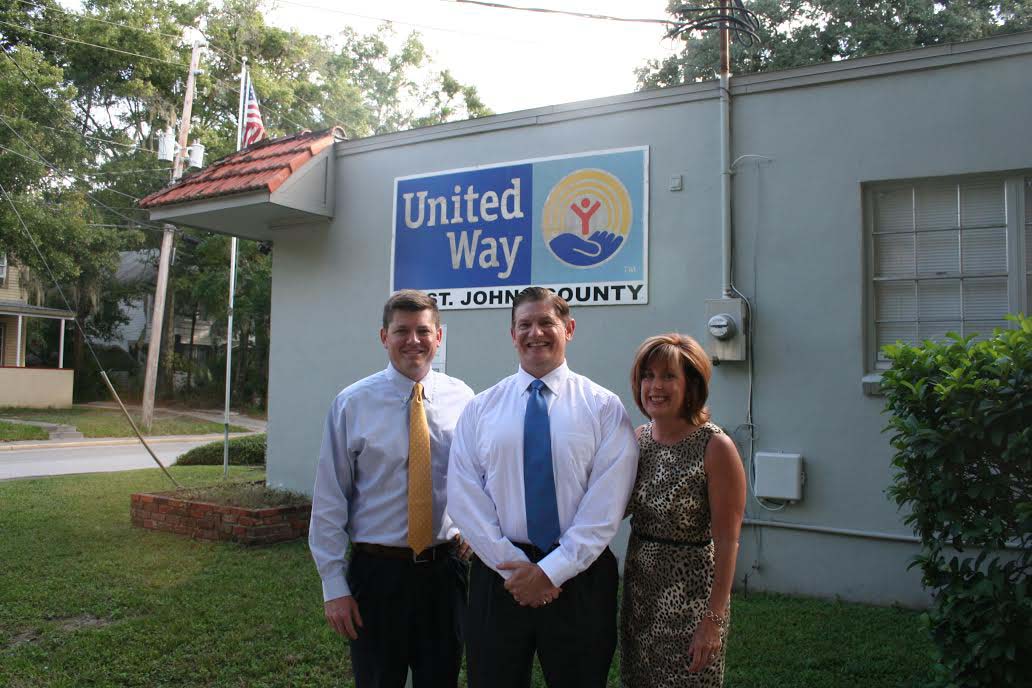 By Alexa Epitropoulos | gargoyle@flagler.edu
By Alexa Epitropoulos | gargoyle@flagler.edu
With the fundraising season well underway, local nonprofits are still struggling to make do with the resources they have.
The economy, which decimated the private and nonprofit sector, is just beginning to allow nonprofits, which provide essential services to the poor and needy in the area, to regain ground. In smaller areas like St. Johns County, the economy has had an even greater impact.
Melissa Nelson, executive director of United Way of St. Johns County, says she has seen conditions improve for the 36 nonprofits that fall under their oversight. The recovery has, however, been slow.
“Every organization has had a tough couple of years because of the economy,” Nelson said. “Everyone has cut back where they can.”
Nonprofits struggle with problems unique to the sector, namely small staffs and smaller budgets.
For United Way, which acts as the foundation for nonprofits in St. Johns County, it has been necessary to withstand economic shortfalls.
“We have persevered. We did not decrease funding for any of the programs we sponsored over the last few years,” Nelson said. “We haven’t grown, which is always our annual goal. But to be able to say ‘we didn’t grow, but we didn’t cut either’ is huge.”
Part of United Way staying afloat in the midst of massive funding decreases has been being creative with marketing and branding. It recently redesigned its website and has built an active presence on social media.
In an era when campaigns like the ALS Ice Bucket Challenge, which became a viral sensation in August, can raise over $100 million in donations, social media is the most efficient marketing tool.
Keeping the residents that nonprofits are created to serve is key, however, according to Nelson. The economy has been difficult for nonprofits to navigate, but more difficult for those in need.
“If you’re one paycheck away from disaster and the economy gets exceptionally difficult, you’re in precarious straits,” Nelson said. “As difficult as it is for us when it comes to dealing with economic hardship, it’s harder for the people we serve.”
Alia Reimer, who acts as executive director for Habitat for Humanity of St. Johns County, says one of the most difficult aspects of running a nonprofit in the economic climate is unrealistic donor expectations.
Donors expect their money to be invested directly into the houses and families Habitat serves, but give less thought to the costs of keeping the operation functional.
“When people give us money, they want to see it go directly to building a home, but a lot of times people don’t like to fund the overhead or administrative costs that come into play,” Reimer said. “A lot of staff has to be in place to make our program grow and function in the way that it does.”
Funding sources are always fluctuating for nonprofits, but nonprofits are still, in the end, businesses, according to Reimer.
“It’s really looking for different sources of income and treating it like a business and not just a charity,” Reimer said. “We have to make sure we have enough money to do our work.”
Another challenge for nonprofits is the sheer amount of organizations vying to tap into the same streams of revenue.
“It’s hard because there are so many nonprofits that are all asking for funding from the same people and the same places,” Reimer said.
Although the bigger organizations, including United Way and Habitat for Humanity, have more notoriety and are able to attract bigger donations, smaller organizations, like Kids Bridge, often have difficulty.
Kids Bridge, a smaller nonprofit that acts as a supervised visit center for children of divorce, has only a handful of full-time employees, including Director of Development Dennis Glavin.
“It’s tough. There’s only x amount of disposable dollars that people have. You have to be really creative and aggressive,” Glavin said.
Glavin, who handles the fundraising and promotion for Kids Bridge, says competing with larger nonprofits takes constantly self-promoting and seeking out new streams of revenue.
“I’m trying to build a foundation where people know who we are and what we do,” Glavin said. “It’s telling civic groups and donors that we’re doing good things and we definitely serve a need in the community.”
As the economy improves, Glavin says donations are more forthcoming.
“I think the economy is perking up in our area. It’s not as fast as it could be, but northeast Florida is doing better than a lot of areas,” Glavin said. “I don’t like to use the economy as an excuse. There’s money out there.”




Be the first to comment on "Nonprofits withstand economy with innovation, willpower"